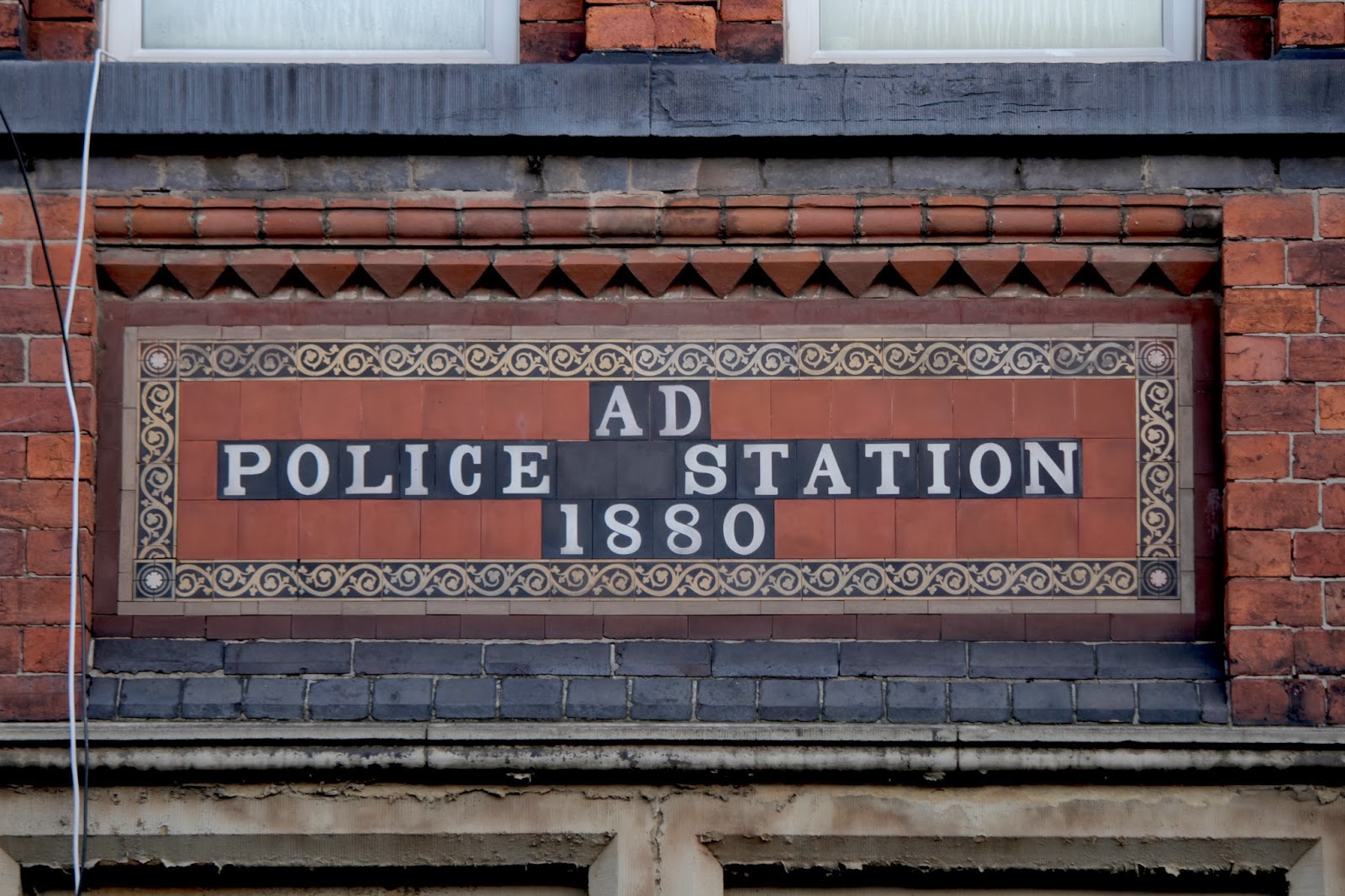 >
>
Unveiling Victorian Police Operations in Terraced Houses The biting wind whips down Rawlinson Street, whistling through the gaps in the ageing red brick terraced houses, carrying with it the salty tang of the nearby Irish Sea. A faint smell of coal smoke from nearby chimneys mixes with the briny air, a reminder of the town's industrial heart. The rhythmic clang of hammers and the rumble of machinery from the shipyard reverberate through the street, a constant reminder of the town's industrious nature. As you pass numbers 113-119, the faded encaustic tile sign on number 115 catches your eye: "Police Station AD 1880." The worn lettering, cracked and covered in a thin layer of grime, hints at the secrets hidden within these unassuming walls. The cool, damp air clings to the worn brickwork, and the echoing footsteps of passers-by seem to mingle with the ghosts of the past. But the story of this police station begins before 1880, and it involves more than just number 115. A closer look reveals that the entire terrace holds a fascinating piece of Barrow's history. A Lease Agreement Reveals the Past Digging into the archives reveals a surprising twist: the police presence on Rawlinson Street predates the 1880 sign and encompasses the entire terrace. A draft lease dated 15th February 1874, bears the signatures of William Gradwell, the builder and leaser, and Colonel Robert Bruce, the Chief Constable of the Lancashire Constabulary and lessee, along with witnesses John Henry Sutton and Robert Dimon. This document, its ink faded and the paper brittle with age, details the agreement to secure the entire terrace at 113-119 Rawlinson Street, as well as another property at 78 Crellin Street for the purpose of "Police Stations". This ambitious endeavour came with an annual rent of £80, a sum equivalent to roughly £10,000 in today's money, highlighting the significant investment made in establishing a police presence in the burgeoning industrial town. The lease itself provides a wealth of information about this early police presence in Barrow. It states: "This Indenture made the fifteenth day of February 1874 between William Grandwell of Barrow-in-Furness in the county of Lancaster, builder of one part and Colonel Robert Bruce of Preston in the said county of Lancaster, Chief Constable of the County Constabulary. To hold the premises hereinbefore expressed to be hereby demised unto the said Robert Bruce and his successors in office as aforesaid for the term of 7 years from the first day of November 1873(4) yielding and paying unto the said William Grandwell his heirs and assigners during the said term the yearly rent of £80 by two equal half yearly payments on the 1st day of May and the first day of November." This agreement shows that the whole red brick section was leased by Robert Bruce for the police, but only one section was actually used as the Station itself – number 115, the one with the sign. The sections on either side, numbers 113 and 117-119, were housing for police officers. This arrangement ensured a constant police presence in the heart of the community. Inside the Station Stepping into the station at number 115, one would have encountered a hallway leading to a men's room on the left, likely a common area for officers, the faint smell of pipe tobacco lingering in the air. The main office, a central hub for operations, would have been straight ahead, its walls lined with wanted posters and maps of the town. The air inside is heavy with the weight of history, the echoes of hurried footsteps and whispered conversations seemingly trapped within the thick stone walls. Beyond the office, a cold, echoing W.C. and two cramped holding cells equipped with a single bed each. The iron bars on the windows are cold to the touch, and the stone floor is worn smooth by countless pacing feet. Though long since repurposed, the cells still exude a sense of confinement and desperation, a chilling reminder of the harsh realities of Victorian justice. The Fate of Crellin Street and the End of an Era Unfortunately, the building leased on Crellin Street, number 72, has been demolished at some point and replaced with a newer building. It is unclear as to what this building would have been used for, Police Station or Police Housing? Either way, both dwellings on Rawlinson and Crellin Street are some of the earliest police buildings in Barrow. It is hard to say how long the Rawlinson Police Station remained as such, but a Station did open on Cornwallis Street at some point, and by 1958 the Police had moved to their present Headquarters on Market Street. A Legacy in Brick and Mortar This humble terrace on Rawlinson Street stands as a silent witness to Barrow-in-Furness' evolving approach to law and order. Its unassuming exterior, with distinctive architectural features like the Vitruvian scroll and modillions beneath the cast-iron ogee gutter, belies its crucial role in shaping the town's history and offers a fascinating glimpse into the realities of Victorian policing. #history #VictorianEngland #BarrowinFurness #lawenforcement #police #archives #industrialtown #historicaldocuments #crimeandpunishment #Victorianjail #architecture